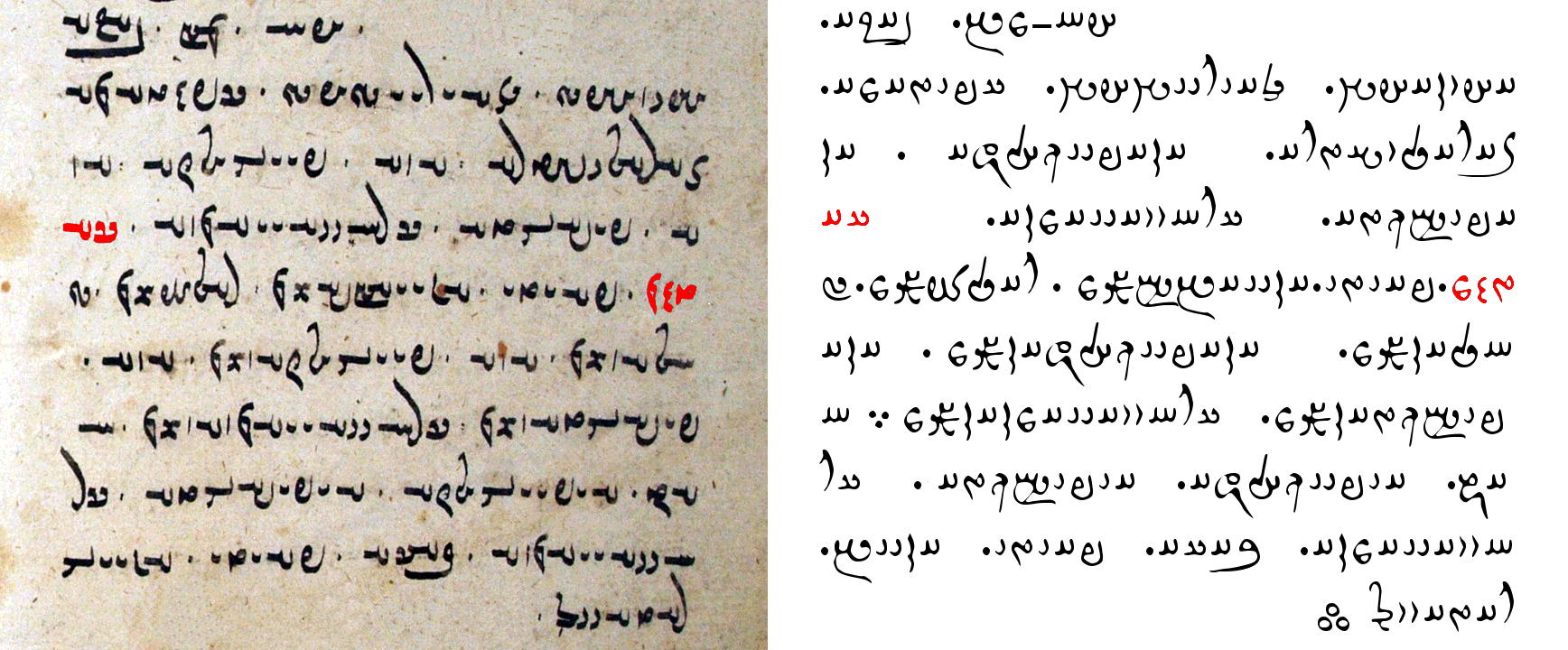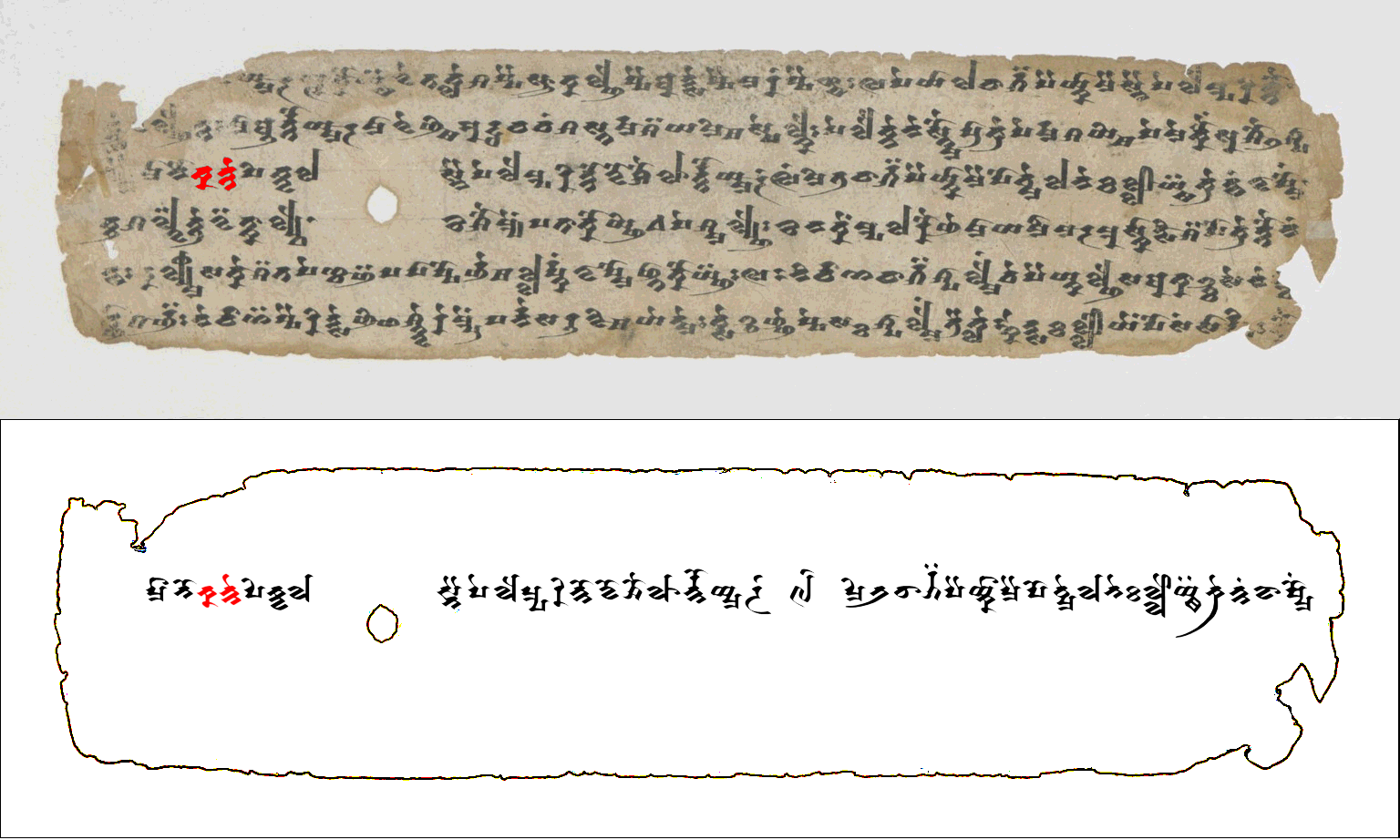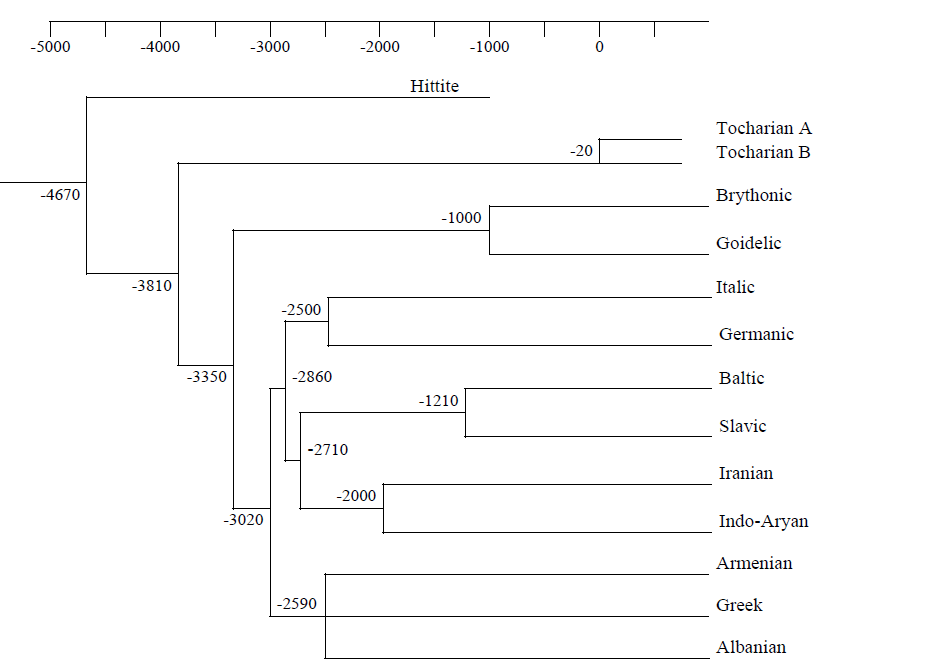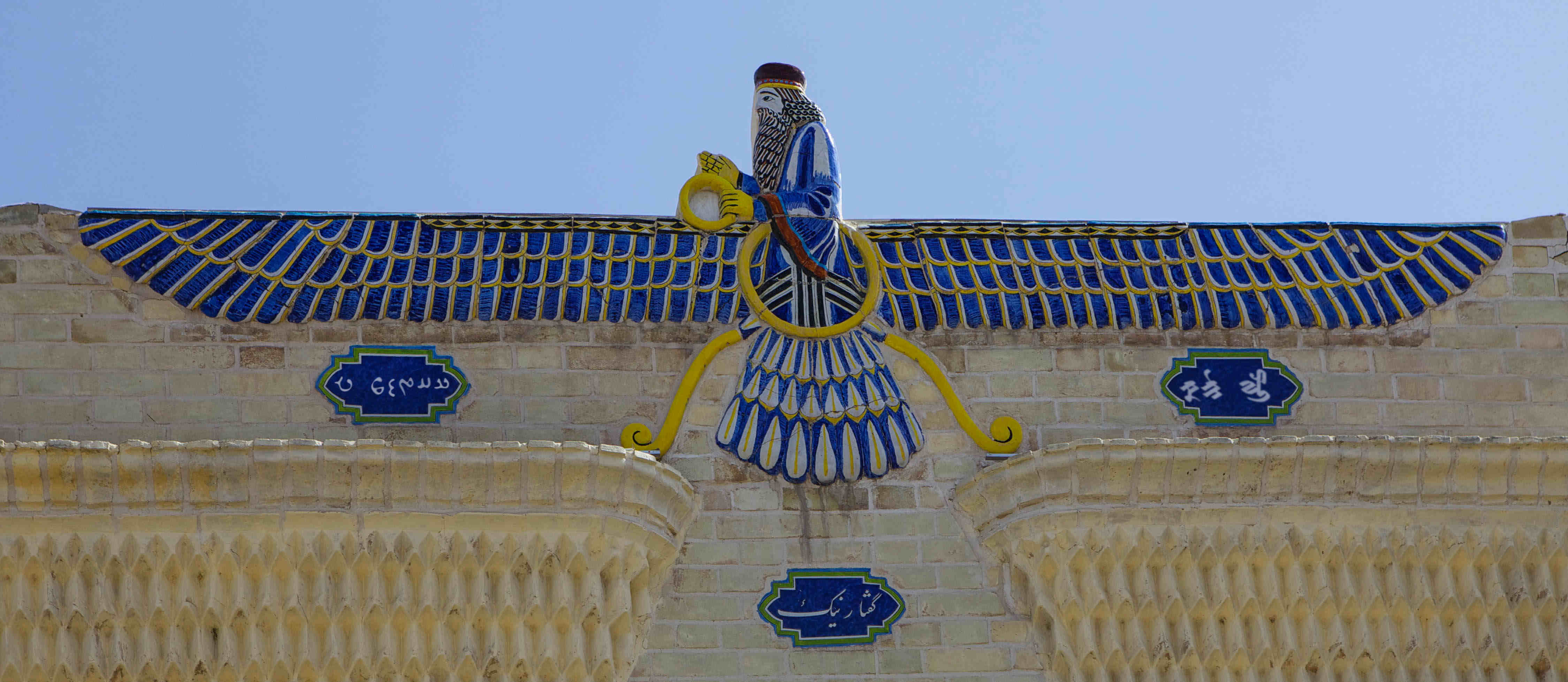Centum and Satem
December 1, 2017
Phonetic changes in Proto-Indo-European descendants
Road sign

The logo picture makes allusion to the divergence of the Satem and Centum languages. One distinguishes two different recensions of Proto-Indo-European language according to how the velar dorsal consonants developped: *k, *g, *gʰ (simple velars), *kʷ, *gʷ, *gʷʰ (labiovelars) and *ḱ, *ǵ, *ǵʰ (palatovelars). The word traditionally chosen to trace these sound changes is *ḱm̥tóm hundred, which is rendered with leading [s] sound in Satem languages and with leading [k] in Centum ones. The names Centum and Satem themselves come from the Latin and Avestan words for 100.
Avestan
The left sign is designed in the Avestan language which belongs to the Satem group. It says «Satəm 40», the number 40 being rendered by a symbol of the Avestan script Excerpt from the Yasna, 19.5, manuscript conserved at the Kermān Zoroastrian Museum, Iran. Check out at the Avestan Digital Archive. (read more about Avestan numbers). An example of an occurence of the word «satəm» in the Avesta is given next (the direction is from right to left):

It literally reads:
| Transcription | Translation |
|---|---|
| hā-mē baγa ahunahe vairiiehe spitama zaraϑuštra anapiiūxδa anapiṣ̌ūta srāuuaiiamna satəm paiti aniiaēṣ̌ąm raϑβąm gāϑanąm anapiiūxδanąm anapiṣ̌ūtanąm srāuuaiiamnanąm :: āat̰ aipiiūxδa aipiṣ̌ūta srāuuaiiamna dasa paiti aniiē ratauuō :: | It is my special prayer of the Ahuna-vairya, O Spitama Zarathushtra! which, if intoned without fluffing and floundering, is worth a hundred of other regular stanzas, well recited without additions or omissions; yet even intoned with fluffs and mistakes, [it] is worth a dozen of regulars. |
The Avestan part of the logo reads “satəm čaϑβarəsata”.
Tocharian B
Tocharian A and B are two Centum languages which became somehow detached from the rest of the group localised in Europe. Their manuscripts dating from 6th to 8th century AD were found in oasis cities of the Central Asia. Unlike many other Indo-European languages, Tocharian did not use an alphabet, but an alphasyllabary derived from the Brahmi alphabet. It also included special characters for numbers. Tocharian B was more archaic and had conserved many phonetic traits of the Proto-Indo-European that had been lost by Tocharian A, even though Tocharian B lasted longer. As an example of a Tocharian B text, we consider the Udānastotra, Manuscript PK AS 5C, part of the Pelliot Koutchéen collection conserved at the BNF. a collection of spiritual verses. «Udānastotra» literally means «praise of the Udānavarga» (more here) and is inspired by it.

It reads:
| Transcription | Translation |
|---|---|
| mā no kante pikwala snai pelempa rittowo śaul ārttoymar • mitravārgä paiykāmai po cmelane kalloymä krentaṃ wāṣmoṃ • | But will I not adopt a life lasting a hundred years [be it] associated with Lawlessness. For I have written the Mitravarga, may I obtain in all births a good friend! |
The Tocharian part of the road sign reads “kante yaltse”.
The Tocharian manuscipts shed light on the problem of relating different Indo-European languages. It was not until their discovery in the early 1900s that plausible descriptions of Proto-Indo-European language were developed. It’s widely accepted today that Tocharian is the most divergent branch of IE (after Anatolian), suggesting that the population that spoke proto-Tocharian separated early from the PIE root. The recent model for the splitting up of the Indo-European family is shown below.
Sergei Starostin's model of the «recalibrated» glottochronology (Workshop on the chronology in linguistics, Santa Fe 2004), as presented by Václav Blažek in LingON.

Read more
Writing numbers in Avestan script: for detailed explanation see Sunjana, Pahlavi Grammar, pp. 68—70.
Technical credits
The Avestan typesetting on this page uses the font «Jamaspa» by William W. Malandra and Emily B. West.
The Tocharian typesetting on this page uses the font «Tocharian» designed by Lee Wilson.

